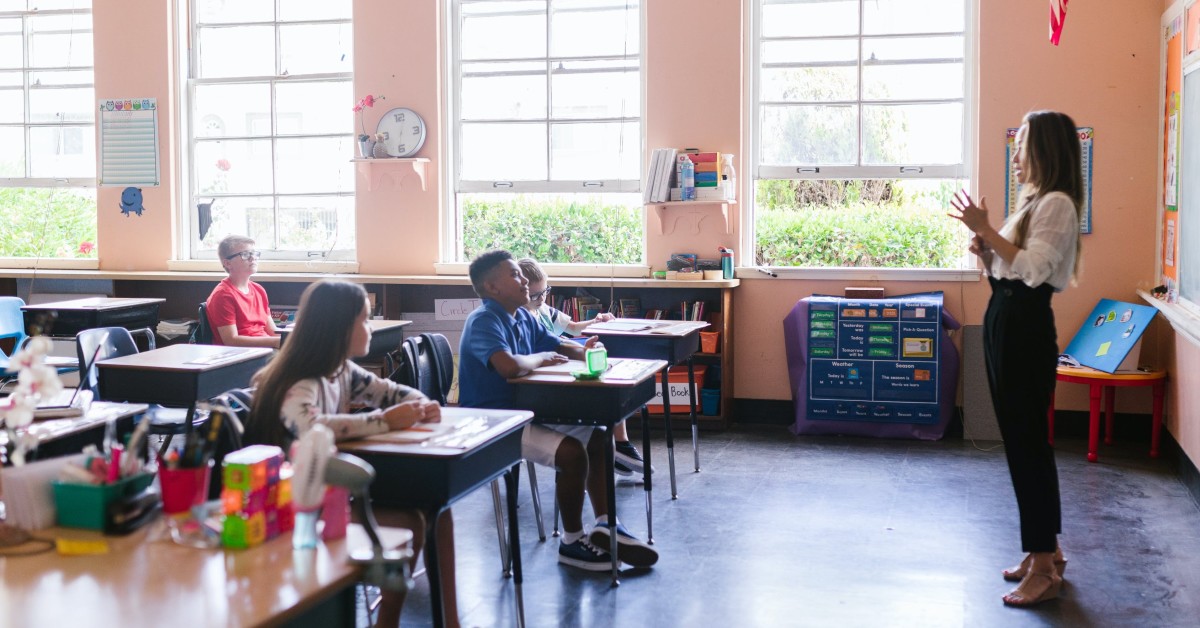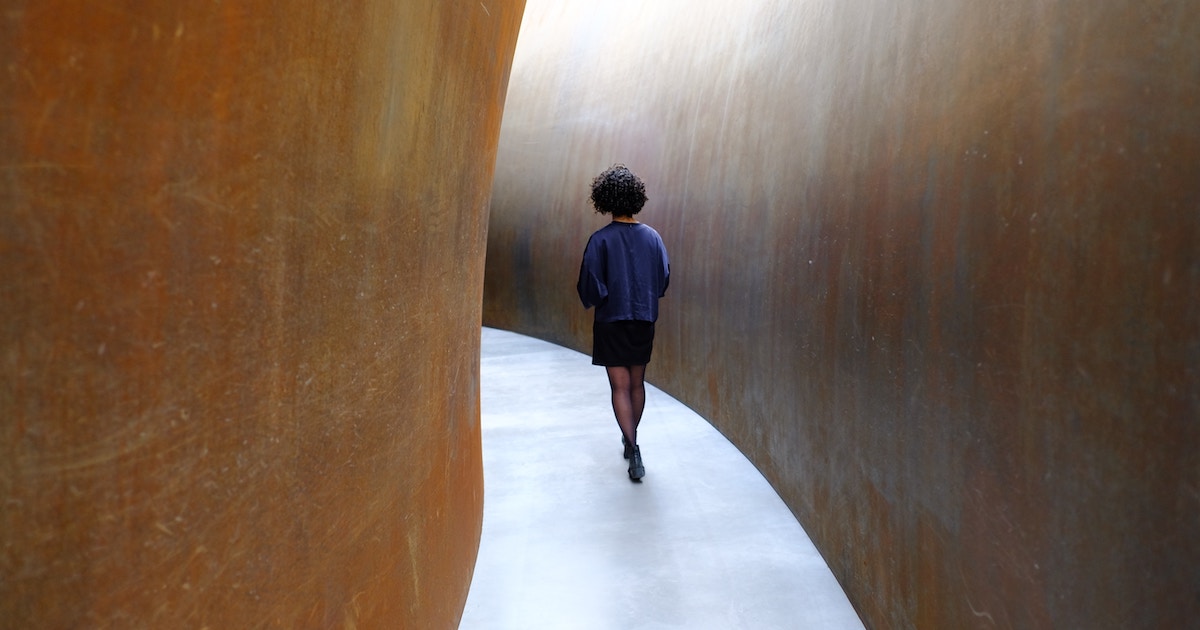
Are Teacher Residency Programs Worth It?
If you're looking to quickly (and inexpensively) earn your MAT [...]

A study by the Centre for Education and Youth asked teachers an important question—why did you enter the field in the first place? An impressive 93% of participants stated that they started teaching to make a difference in a student’s life.
And yet, as teacher shortages continue to spike and retention rates fall, school districts are working out how to properly prepare aspiring educators, support their current faculty, and attract effective new teachers to their schools who will stay for the long run.
High-quality teaching training programs and professional development are both crucial to keeping driven teachers around. Overwhelming research shows that teachers stay longer and make a greater impact on students when they participate in a teacher residency program and are mentored by an experienced teacher.
Many of the current teacher residencies train student teachers in the heart of an urban neighborhood, offering what is often known as an Urban Teacher Residency (UTR). By placing student teachers in high-need schools with a full range of complex challenges, both the trainee and students benefit from the vigorous training process.
If you’re unsure if these programs are the best match for your next career move, we’ll cover:
If you’ve already started your search for the right early teaching experience, you’ve likely stumbled upon the phrase ‘urban teacher residency.’ This refers to an alternate master’s experience that places grad school students earning their education master’s right in the classroom with mentor teachers.
Teacher training programs are modelled after medical residency programs. Instead of delaying teaching in-person toward the end of—or after—graduate school, teaching residents spend a whole academic year in the classroom under the tutelage of a mentor teacher. Working in the school for a full year—instead of a set number of sporadic hours or weeks—allows student teachers to experience the full spectrum of challenges teachers face on a daily basis from September through June.
Residencies consist of either a full or half-day teaching in the classroom—with coursework done at night and on weekends. Student teachers apply the lessons learned through their master’s degree coursework on a daily basis, while receiving feedback from their mentor teachers throughout the year. When linked to a university, students earn a Master of Arts in Teaching (MAT) or a similar graduate education degree.
In many programs, students work in high-need public or charter schools, and commit to working as a salaried teacher for a set period of time after their residency at the school is complete.
Individual universities partner with nonprofit organizations and local districts to build a well-rounded program that helps to meet the current educational needs of the community. Urban Teachers, which works with schools like American University in Washington, DC. and other major institutions of higher education around the country, is a popular option.
It’s important to note that not all resident teachers complete their time in an urban school. Smaller universities may partner with a suburban or rural local district or a charter school with just as much need, just not the urban setting.
Urban resident programs target high-need districts low on teachers with certain specialties, such as English or math and other STEM subjects. Like most residencies, students sign on to teach with their assigned school if they’re hired after training.
| University and Program Name | Learn More |
|
New York University:
Master of Arts in Teaching
|
|
|
Merrimack College:
Master of Education in Teacher Education
|
While there are significant benefits of the program for the school, students, and even the mentoring teachers, what are the advantages for the trainees themselves?
The clearest benefit is proper preparation. If you ever intend to work in an urban setting, the top goal in your first few years of full-time teaching is avoiding burnout. Programs like Urban Teachers aim to prepare prospective teachers for the rigors of teaching, providing both dedicated mentorship and one-to-one coaching during the school year.
Working within an urban setting also builds your teaching resume and helps you form connections for your next career move. If you choose to reorient your career toward school administration roles or education policy down the line, such as with an MEd in Education Policy and Leadership, you’ll have the in-classroom experience in the local urban school system you’re seeking to transform.
The endgame for all teacher training programs is to create effective teachers who best serve the needs of students and their schools. Residency programs took off due to their accelerated pace, their effectiveness at preparing qualified teachers, and their positive impact on students and their schools.
While research is still in early stages and ongoing, early data indicates that teachers with in-person classroom training are two to three times less likely to leave the field than those without it. Both schools and students depend on consistent and highly-trained educators to create stability in the classroom. NYC schools lose around $20,000 each time a teacher calls it quit and they have to fill the vacancy.
Retention statistics are particularly important when it comes to supporting teachers of color. The NYC Comptroller points out that Title I schools (those that receive additional federal funding to support schools in high-needs communities) are more likely to have high teacher turnover rates. And since NCTR-member schools include a much higher percentage of both mentors and mentees that identify as people of color, the program is a key way to both attract and support teachers who reflect the diversity of their student bodies.
So why are teachers with hands-on experience more likely to stay? Student teachers in residency programs are able to immediately apply everything they’re learning through their coursework in real-life classroom situations—all with an experienced mentor by their side.
Year-long teacher residency programs typically provide scholarships and stipends. Financial aid either comes through the universities themselves, local school districts, government grants—or a mix of all three.
A student’s share of tuition and living expenses varies widely, so it’s important to check out the financial aid structure of each program before applying. For example, Urban Teacher residents receive at least $20,000 during the first year. From the second year on, students receive full-time salaries and benefits as employees. The exact numbers, however, depend on where you’re placed.
Universities will offer unique compensation and financial aid packages as well. NYU helps candidates combine scholarships, district or charter school stipends, grants, and federal student aid. Teachers College at Columbia offers a $70,000 stipend for the student teachers to split between tuition and living expenses.
So yes, financial aid is common, but you’ll find a large range of out-of-pocket costs.
With the rapid rise of teacher residency programs, you’ll find schools and organizations everywhere from Washington, DC to Los Angeles. Smaller cities throughout the country also offer urban teacher placements, particularly through nationwide programs like Teach for America.
Here are some of the major hubs for teacher residencies and their partner programs or universities.
Programs at NYU, Teachers College at Columbia University, and Hunter College all work with NYC public school districts on urban teacher residencies. You also can find programs through the New York City Department of Education (NYC DOE) and NYC Teaching Fellows.
American University has one of the larger networks of partner organizations and districts, many of which offer additional scholarships and unique residency opportunities. Partnerships range from Urban Teachers and Teach for America (TFA) to local school districts and independent school associations.
The Los Angeles Urban Teacher Residency is just one of the key players in the LA alternative teacher education scene. This popular program partners with California State University Los Angeles and the Center for Collaborative Education. Participants work within a tight-knit cohort at a high-needs LA school and earn teaching credentials in just 12 months.
Many programs, including Urban Teachers, take a full three years to complete, but participants are teaching full-time by year two as salaried employees. Teacher candidates graduate with a Master in the Art of Teaching (MAT) degree, as well as the prerequisites to test for state teacher certification.
Other programs across the country range from one to four years, depending on additional coursework and the demands of the local district. After all, an expedited program assists the schools as well as the aspiring teachers, filling in the gaps in subject areas with an immediate shortage.
As expected, every teacher education program has its own admissions requirements, but there are some similarities overall. Most programs require a bachelor’s degree—not necessarily in education—a minimum GPA, and specific core values that demonstrate your dedication to becoming an educator.
Programs like Urban Teachers also require students to maintain a set GPA during their first two years and demonstrate professional growth until the end of the fourth.
In nearly all urban teaching settings, students must sign on to teach at their host school for an average of three years after completing the program.
Students pair their in-classroom residency with traditional coursework. Depending on where you study, urban residency programs focus on both broad teaching strategies in targeted subjects—math, English, science, etc.—as well as city-specific policy and community topics.
For example, take a look at the first year at the University of Chicago’s urban teacher program. Students cover Chicago’s education policy, child development and trauma, as well as curriculum and pedagogy, with observations in local classrooms.
Urban teacher programs often ask applicants to name their specialization on their application. With an accelerated course of study, students must jump right into areas like early childhood learning, special education, English as a second language (ESL), or STEM learning. In some cases, the local needs of the district will dictate the available pathways.
There are endless career pathways in education once you earn an MAT. Even if you work in a high school for your first three years after a residency, you can hone your skills to transfer to curriculum development, literacy tutoring, or academic advising. Teachers also go on to earn terminal degrees with their eye on school leadership roles.
Urban teacher residencies are exceptionally challenging, there’s no question. But their rigorous structure means you’ll be highly prepared for the most challenging classrooms. And most importantly, the host schools benefit from highly prepared, enthusiastic, and dedicated educators with the support they need to lead and inspire.
(Last Updated on February 26, 2024)
Questions or feedback? Email editor@noodle.com

If you're looking to quickly (and inexpensively) earn your MAT [...]

Florida desperately needs teachers. If you're thinking about a teaching [...]

New York City-based teacher residency programs offer prospective student teachers [...]

Think you'll need financial aid on your way to becoming [...]

Leaders in K-12 schools, districts, universities, and other educational organizations [...]
Categorized as: Elementary Education, Secondary Education, Education & Teaching